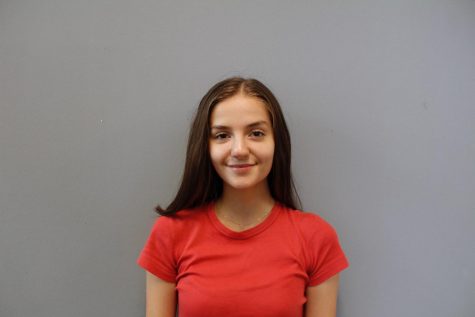Paintbrushes to Protractors
Parker’s Growing Transition to a Left-Brained Curriculum
On the third floor, an abstract mural with of a face with two eyes––one blue and one brown––stares at students milling about the hallway. Travel to the second floor, and a pastel painting of Parker’s first principal, Flora J. Cooke, hangs outside the Kovler Library. Continue to the bottom floor, and a portrait of Col. Francis W. Parker, made entirely of shaded popcorn kernels, overlooks the math wing. Student works like these––produced both in and out of the classroom curriculum––are displayed all throughout Parker’s nooks and crannies.
In a speech delivered to the Parker Parents’ Association and the School of Education of the University of Chicago in 1912, Cooke spoke on the importance of artistic exposure in education. “It is a medium which teaches the child to observe and represent correctly what he sees,” Cooke said, “and surely this will be valuable to him in almost any phase of his life.” Cooke also explained the use of artistic expression with different grades and how music was an essential component of Morning Exercise.
For over a century, Parker has been revered a “right-brain” school with an emphasis on the arts and humanities. Its rival and “left-brain” counterpart, The Latin School of Chicago, maintains a reputation for its focus on more analytical, number-based subjects.
When she first came to Parker 42 years ago, English teacher Bonnie Seebold had heard the term “basket weaving school” to describe its abundance of art classes and progressive pedagogy. “It was sort of a joke,” Seebold said, referencing the nickname. “But I think people did recognize that the school had a strong History, English department. It always has had a strong History, English department.”
Today, the Upper School boasts nearly 40 offerings in the visual, performing, and dramatic arts, including courses like “Creative Songwriting Seminar” and “Making Historical Documentaries.”
Seebold noted that in recent years, the school has made a transition to become more oriented in the science, technology, engineering, and math (STEM) sectors. “I think we still have a strong humanities, but I think we’re much more balanced. That’s been going on for quite a while,” Seebold said. “The school recognized a need…to bolster the science––the STEM program.”
Upper School math teacher of 17 years and former Parker student Christopher Riff has also noticed the shift towards including STEM related courses, programs and opportunities during his time at Parker. “There’s definitely been an emphasis sort of at the administration level talking about it,” Riff said, “and sources of funding to support staff and stuff.”
Riff cited the recent renovation of the science wing and the growing popularity of Robotics clubs among the Lower and Upper School as evidence of a growing focus in the sciences and maths.
Riff believes the college process and the growing prioritization of STEM are related. “I think we have a strong emphasis in the arts, but definitely, there’s been a creep towards a more college prep type of school,” Riff said. “I think that they’ve probably held onto it better in probably the Lower and Intermediate school, but the Upper School, in particular, that’s one of the things that worries me occasionally––that we’re going too far that direction.”
Junior Wilson Cedillo also believes Parker is slowly making the transition to a more college preparatory education. “I think it depends on the years,” Cedillo said. “Obviously, next year, they’re adding another history course and they chose that over adding other STEM or programming courses. But, with the requirement of the class of 2021 having to actually take programming, we’ve become more of a college prep kind of school.”
When speaking on the importance of arts in schools, Department Chair of the Performing and Dramatic Arts Leslie Holland-Pryor suggests that all students recognize the artistry within themselves.“I think the most important thing is that students take the time to slow down and embrace that artistic voice in themselves,” Holland-Pryor said, “because, whatever career path you pick, being able to find a way to frame it on a context that’s aesthetically appealing or interesting is what keeps you engaged.”







